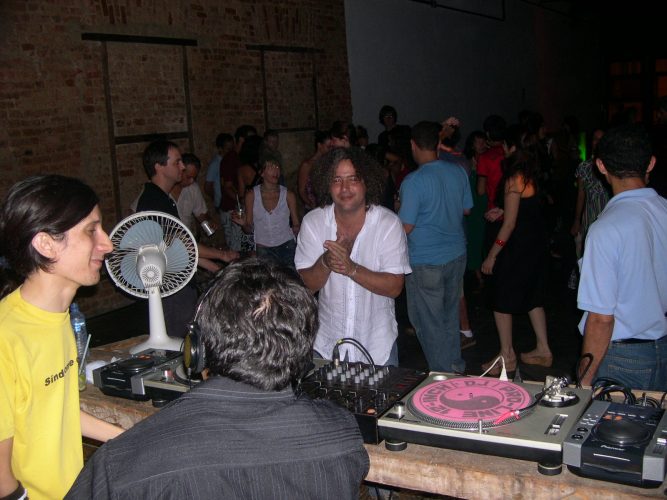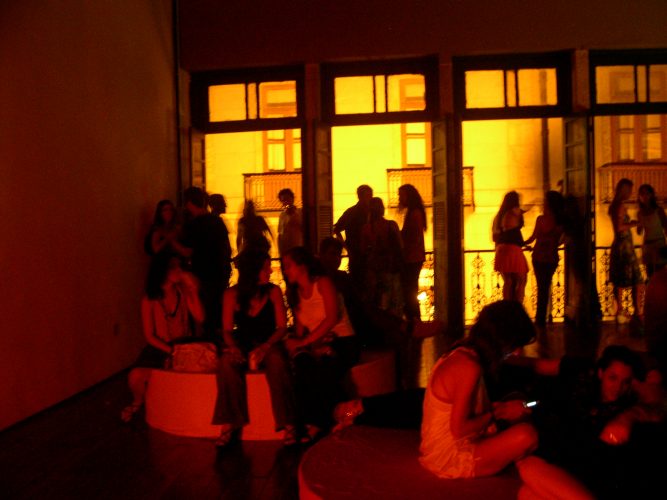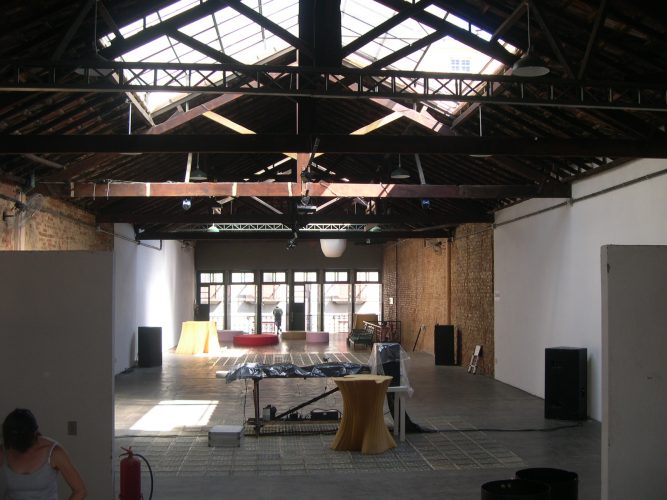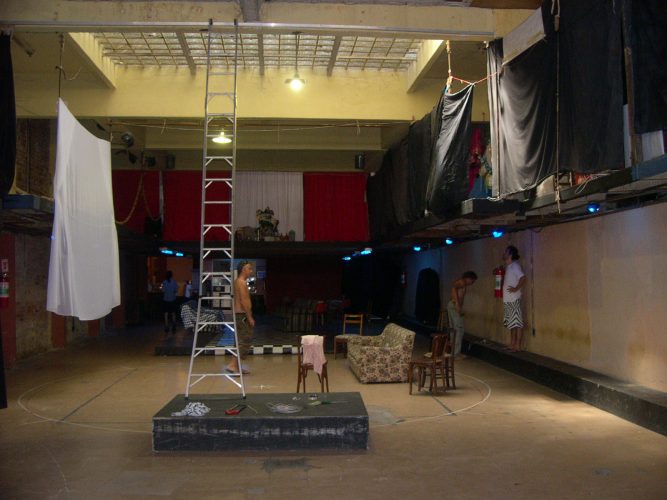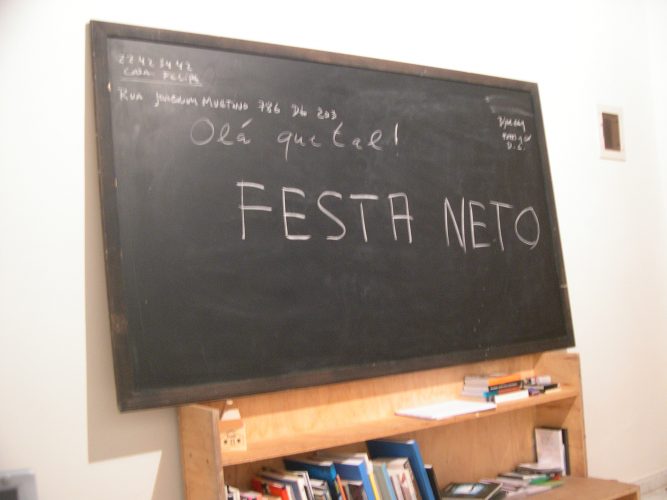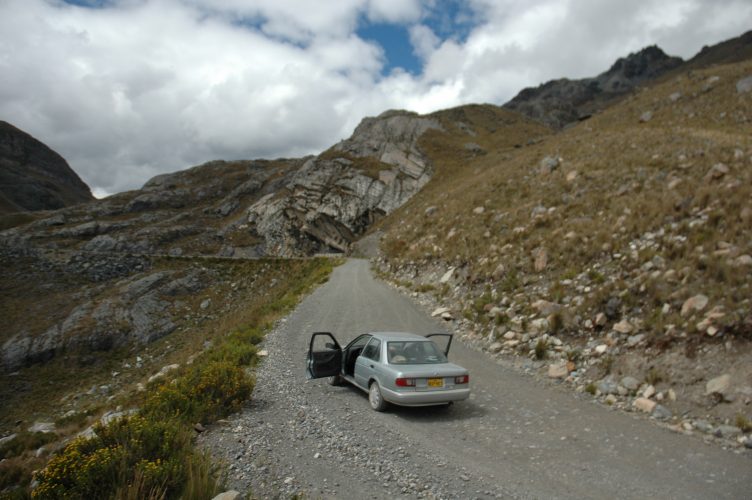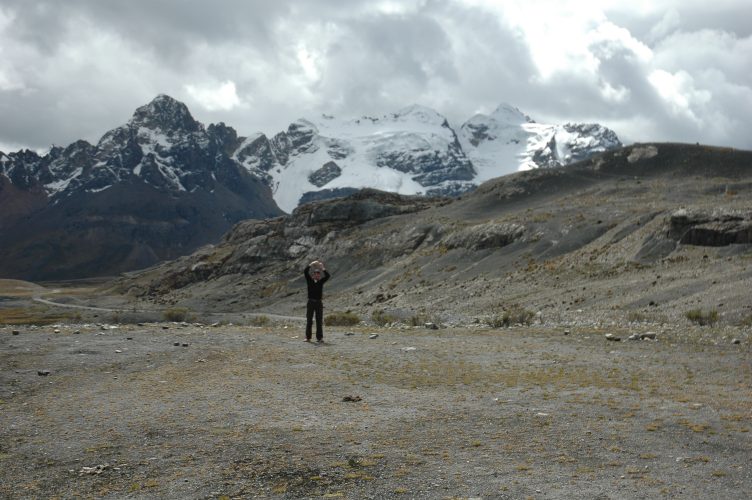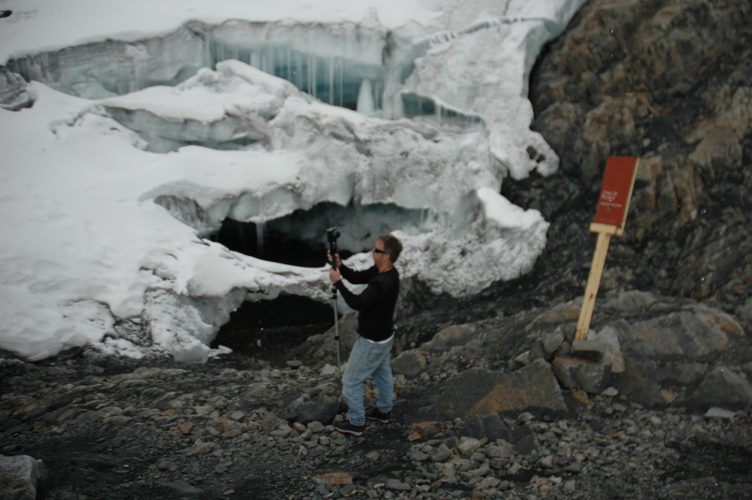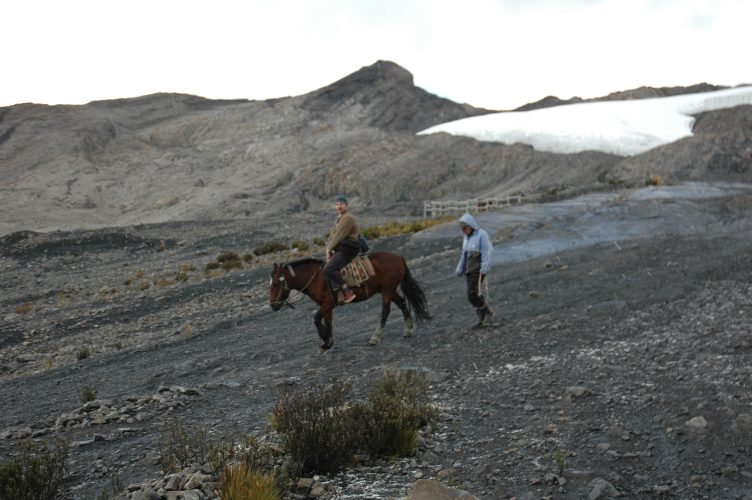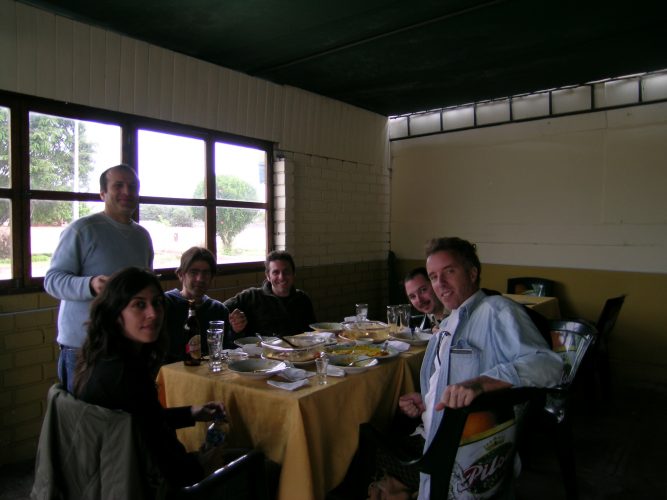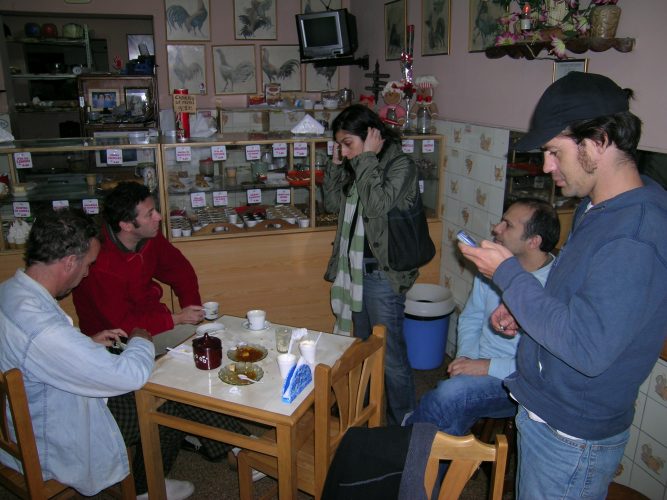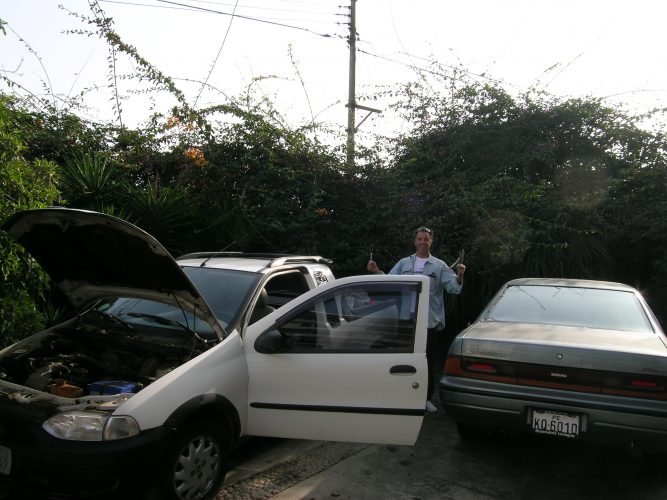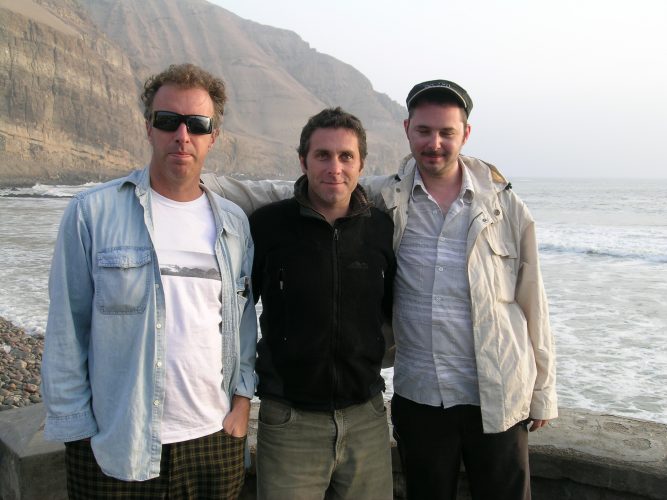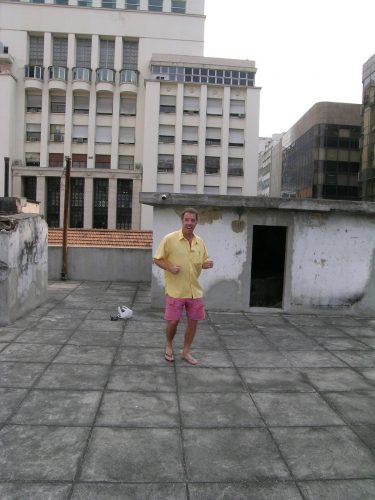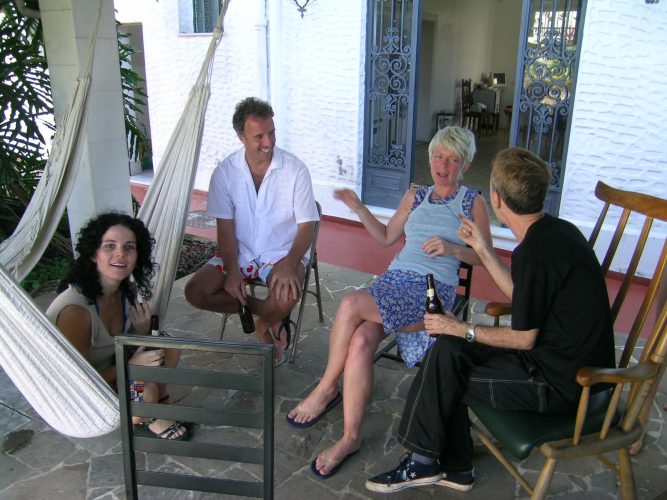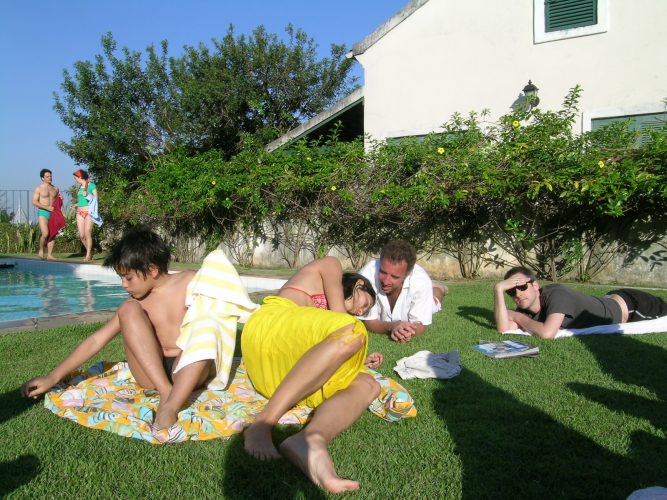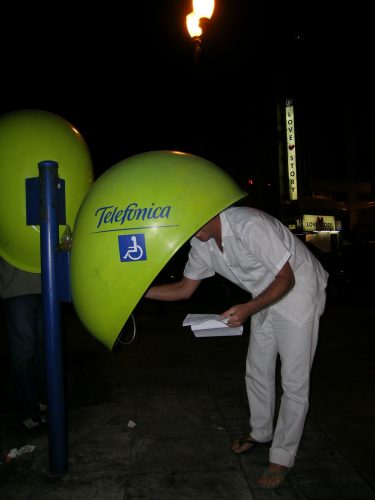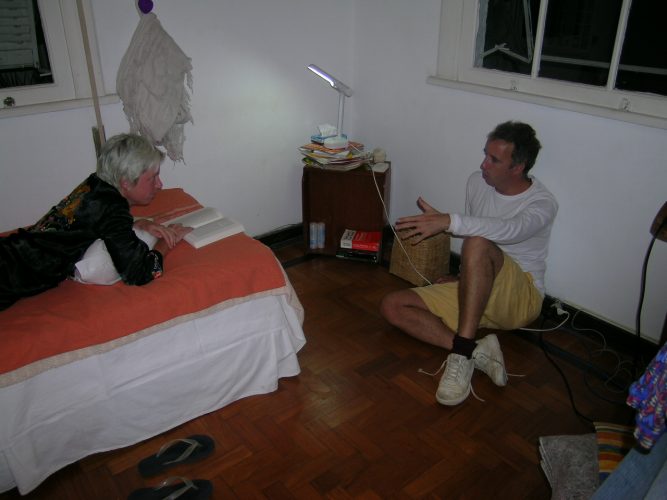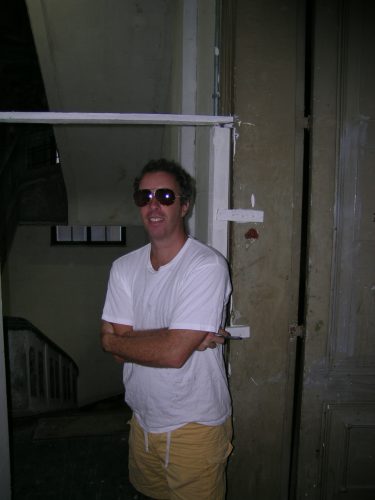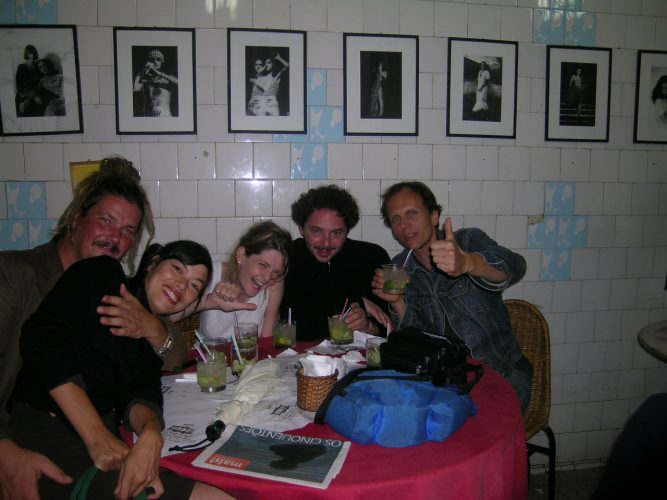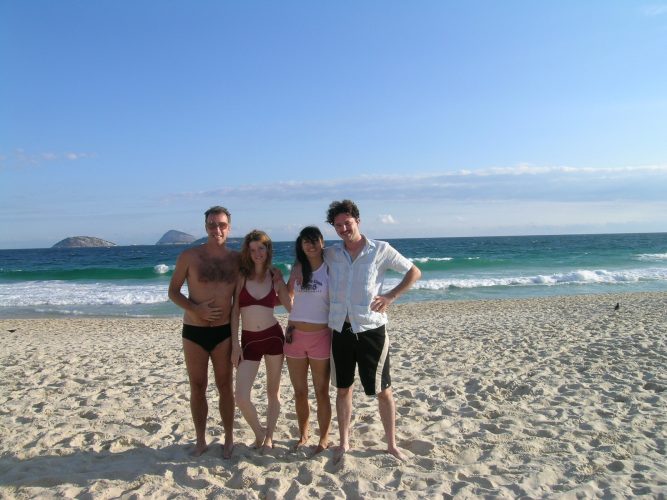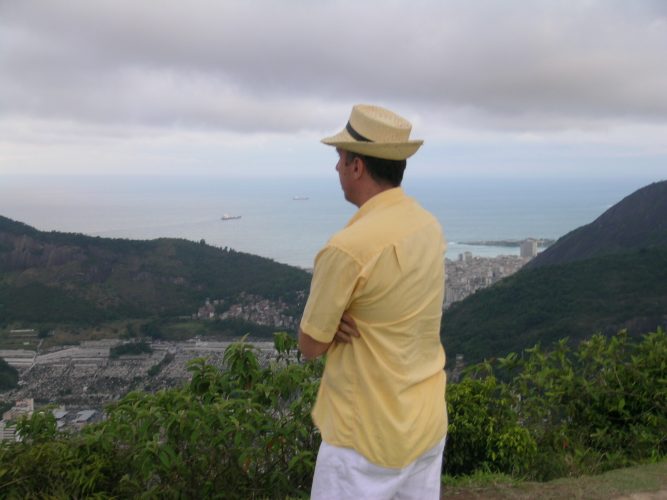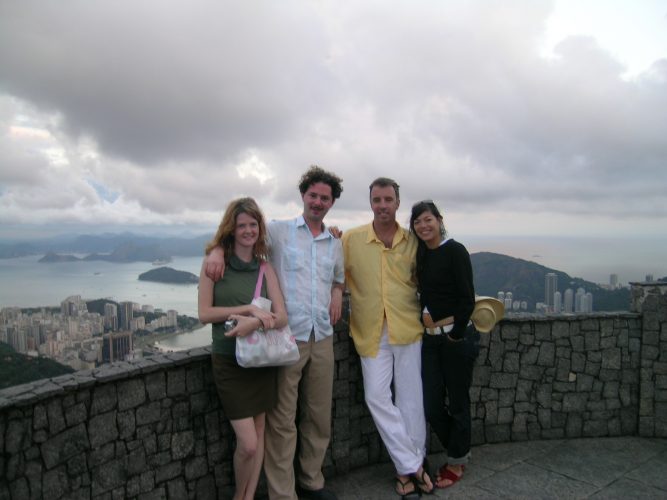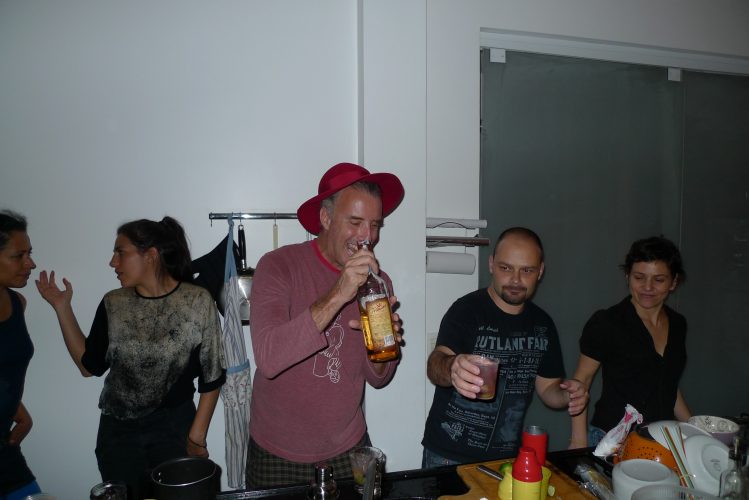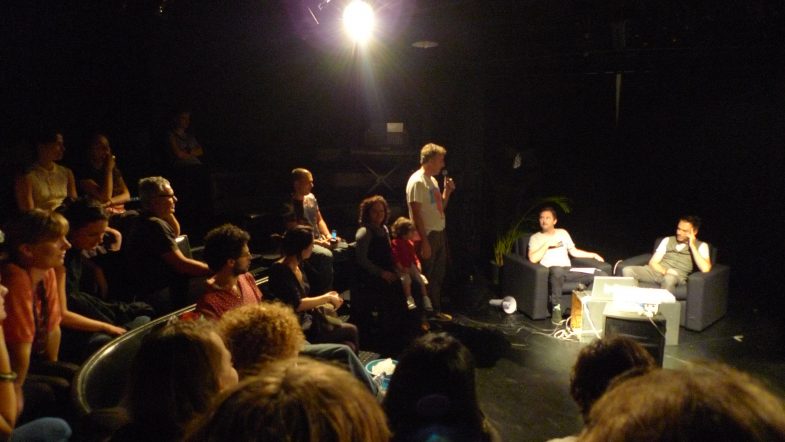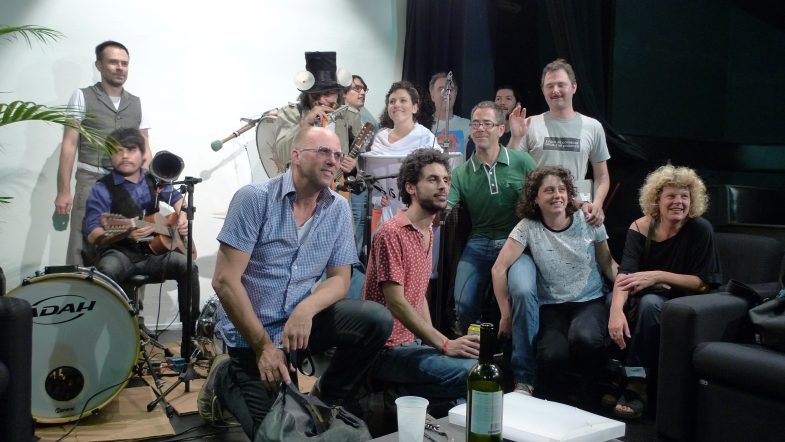Bruno Verner and Eliete Mejorado
Andrea Fraser
El Basilico
Tamara Stuby and Esteban Álvarez
www.tamarastuby.com.ar / www.esteban-alvarez.com
“La primera reflexión se deriva rápidamente en un elogio: es muy difícil sino imposible definir qué es Capacete: un planeta, una fuerza, una condición contagiosa, una filosofía. De la larga y polifacética relación que he(mos) tenido hasta aquí con Helmut, diría que la característica más constante es la de no poder trabajar sin divertirnos mucho, y de no poder divertirnos mucho sin que se convierta, tarde o temprano, en trabajo. Creativo, claro. Siempre. Esa adicción —imparable, irresistible— doble venía, además, con una debilidad especial para el canto de sirena que es lo aparentemente imposible. De allí, miles de incidentes, anécdotas, historias y proyectos (fructíferos o no), que recién me doy cuenta que dejan mucho más asombro, todavía, que sí, decidimos intentar tal o cual cosa y orgullo de lo más puro, que miércoles, sí, logramos tal o cual cosa que fotos o evidencia concreta. Así es la vida. Estoy segura que hubiéramos aguantado mucho menos tiempo en el ejercicio de la autogestión sin su ejemplo –de primera mano, allí en la trinchera— de cómo hacer administración sin alejarse demasiado del caos de la creación, y cómo el afecto y el humor son el suero mágico que conjura el lado más humano (Dr. Jeckyll) de las instituciones, ahuyentando su potencial lado de Dr. Hyde. La colaboración entre El Basilisco y Capacete fue enormemente productiva, permitiéndonos concretar aspiraciones mutuas que antes habitaban las aguas de las sirenas mencionadas, y nuestra asistencia como residentes también floreció de manera imposible de imaginarse antes de estar en medio de ese baile. Resulta muy difícil contabilizar el resultado; nuestros cálculos generalmente se nos escapaban de forma geométrica y así me parece ahora. Diez años después, y todavía queda aprendizaje de todo eso para masticar, el calor de esa amistad sigue y alumbra hacia adelante la admiración por el amplísimo abanico de proyectos, actividades y análisis amasados dentro de ese Capacete.”
Gabriel Lester
……
Past and Future in thin air.
“If there has ever been a possibility to turn back time, this would be a suited moment to do so. However much things would probably turnout to be the same, I would have known things in advance, provided in turning back time, I could remember the future. That’s how I look at it now, I mean, from where I can see things at this point, today. Then, mid-day early July 2006, I found myself surrounded by as much endless future as overwhelming depths of the past. We, Helmut and I, were on our way to one of Peru’s highest mountain peeks of the Andes. Driving our ragged rented car with caution over an endlessly winding and unpaved mountain trail we arrived at a valley so vast and boundless, that my first thought was how we had crossed the ages to enter a pre-historic landscape. And then and there, as I envisioned myself having traveled back trough a loophole in time, soon to be surrounded by long lost wildlife and luscious vegetation, both my past and future flashed by. At the time a substantial part of my fortunate and solid world had started to show cracks and crumbles. In April I had moved back from New York to support my mother in her life’s struggle against lung cancer, only to join Helmut on his journey trough Peru in June and July. It had been my mother’s whish and joy for me to continue my adventures life as much as possible. And at every village or city on the course of our voyage, I rushed into an internet café and wrote home an exhilarated travelers report. It was as if I could share my journey to one of the highest peeks of the world; as if I could bring my mother to where time had stood still and where the air was so pure that it could cleanse all disease. And trough the contact we kept during my travels, it became clear that my latest expedition had in a way become as thrilling to her as it was to me.
+ We stopped the car at the entrance of a cave covered in pre-historic paintings. Stepping out of the car I was overcome by dizziness and the extensive violence of the nature that surrounded me danced before my eyes. Maybe I suffered from some light version of altitude disease and possibly the oscillating travel had exhausted me, what I could feel as the world twisted before my eyes, was a deep confidence and optimism. Then and there everything, next week, next moth, next year, my entire future would be magnificent and all right. Hemlut and I walked around marveling at the valley beneath us, and the mountaintops above. I thought about how I could enjoy being back in Brussels, how I would witness my mother’s recovery and how I would travel to Asia for the first time. Later that day we reached the mountain top at over 5000 meters (3 miles) height. The air at the top was so thin that we could hardly breath or speak. I peered into the distance, imagined that distance to be the depth of time and was sure that in the future we could all live forever.” P E R U . I M P R O V “Capactete’s ROAD lead to my doorstep and an invitation to work and travel a stretch alongside the Pan-American highway was offered and excepted. The journey would lead from Lima (Peru) to Quito (Equator). People asked “what will you do?”. My reply was, that I had been doing several things the past years and that, most likely, I would do one or a few of those things there. However, slowly a concept of what could happen started to take shape. When one thinks of a road-movie, the principle is that between start and finish of a journey a story unfolds. This is a lineal narrative. A story that is told on different levels in time and location is a parallel narrative. I envisioned a road movie constructed as a parallel narrative. Instead of events occurring after each other as the road is traveled, it would seem to all happen at once. With this idea and allot of confidence in Helmut Batista’s and my own ability to connect to people and improvise, I left for Peru via Rio de Janeiro. In Lima both Helmut and I were invited to lecture at ‘La Culpable’ – an artist run space. There we met with several local artist and curators, some of which could advise us on where to go and what to see. Soon after, we left Lima for the Andes Mountains. I felt like a pioneer, traveling on intuition and opportunity. And while driving through the impressive nature we made regular stops to shoot a scene or sequence. The idea to create a parallel movie has never left the project, however confronted with the reality of our travels and in order to work daily in un-predictable conditions, the rules of the concept were loosened to fit the actuality. What had occurred to me during the first days of the travel is that if I was going to work with locals and mostly on an instant basis, I should work with a modus that enabled me to stop the car, mount the camera and start shooting. This principle seems simple and easy, but in order to avoid rather digested exotica and/or tourist snapshots, I needed to challenge the images I was making at all time. This led to a series of improvised scenes – shot during the entire journey trough Peru – where at first I would objectively document a scene or location. As such I documented what was going on ‘for real’; nothing was orchestrated, choreographed or interfered with. The second phase was to engage the documented image – the people and location – and change the objective document into a highly subjective document. As such a ‘natural’ scene had become ‘artificial’. A play between reality and fiction was constructed carefully. After returning to Lima from the Andes, we traveled to the city of Iquitos in the middle of the Amazon rainforest. Colombian/Spanish artist Raimond Chaves joined us together with Peruvian artist Gilda Mantilla who were both researching works the 2006 Sao Paulo biennale had commissioned them to produce. By car and mostly by boat, the four of us traveled trough the rainforest and over the Amazon river, all the while setting up and filming scenes. After a few days stopover in Iquitos we returned to Lima and got on the road to Quito in Equator. In Equator we did not have the opportunity to continue to work, but were invited to lecture at the Catholic university of Quito. All in the entire ROAD journey/project took us trough deserts, over mountains, past the Pacific Ocean, cross the jungle and finally up to the capital of Equator. All the while scenes for the project were shot, alongside photos and other video documents that were stimulated on the spot. At this moment most of the digital material is ripening in some a hard disk. In the near future, with a nice blend of time, a scent of post-production and a touch of drama, the works will be served. Seriously though, the ROAD project was hugely productive and inspiring, leaving me with allot of fruits to be plucked and appropriated in some way. For the moment this feels like a luxury problem, since many of the scenes shot have worked out really well and there is much potential for several works or directions to venture into. Time will tell if the final work will be a parallel edit of a lineal experience or a selection of improvised scenes, narrating small adventures…” Gabriel lester 07.2006 -
Ligia Nobre
livro para ler – CAPACETE 10 anos
[gview file=”http://capacete.org/wp-content/uploads/2018/11/livro-para-ler-2010PORT-ligia.pdf”]
….
Ligia Nobre é arquiteta e pesquisadora, graduada pela FAU-Mackenzie (São Paulo) e mestra em História e Teoria da Arquitetura Contemporânea pela Architectural Association School of Architecture (Londres). Em 2007/08 trabalhou com pesquisa urbana e ensino no Studio Basel – Contemporary City Institute/Departamento de Arquitetura da Universidade ETH Zurich (Basiléia). Co-fundou e dirigiu com Cécile Zoonens a plataforma cultural sem fins lucrativos exo experimental org. (São Paulo, 2002 – 2007) que promoveu projetos experimentais nas áreas de urbanismo, artes visuais e questões sociais, através de publicações, seminários, workshops, exposições e residências. Foi responsável pela coordenação editorial do livro do artista Peter Friedl Trabalhando no Copan / Working at Copan (Steimberg, 2007), e é co-autora de artigo sobre arquitetura brasileira contemporânea para futura publicação da editora Phaidon (Londres, 2009), dentre outros.
Kazuo Nakano é arquiteto urbanista, graduado pela FAU- USP, com pós-graduação em gestão urbana e ambiental pelo Institute for Housing and Urban Development – IHS de Rotterdam, Holanda, e mestre em Estruturas Ambientais e Urbanas pela FAU – USP. Trabalhou no Centro Brasileiro de Análise e Planejamento – CEBRAP e foi Gerente de Projeto da Secretaria Nacional de Programas Urbanos do Ministério das Cidades. Atua como técnico do Pólis – Instituto de Estudos, Formação e Assessoria em Políticas Sociais desenvolvendo pesquisas urbanas e coordenando assessorias técnicas em diversas cidades brasileiras na elaboração de planos diretores participativos. Tem artigos sobre esse assunto publicados em livros e periódicos especializados.
